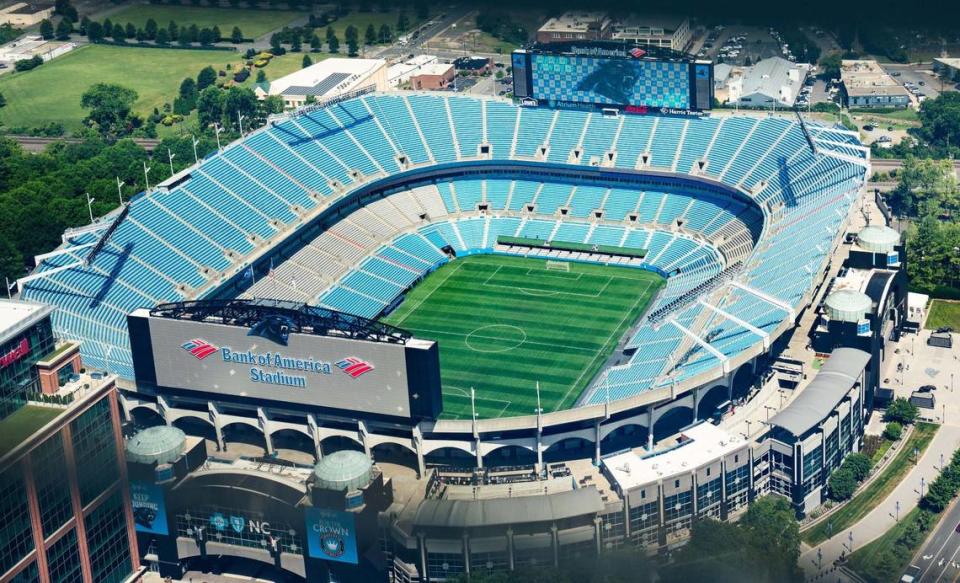The two biggest problems with the Panthers’ stadium economic impact study | Opinion
$1.2 billion.
That’s how much money that Bank of America Stadium generated for the Charlotte metro area in 2023, according to a study commissioned by Tepper Sports & Entertainment. The city believes that renovations to the stadium, which will be bolstered by $650 million in taxpayer dollars, will generate $22 billion in total economic impact.
It’s a figure that city staff emphasized when they presented the project to Charlotte City Council earlier this month, and the number was invoked repeatedly by council members who supported the project in Monday night’s vote.
But a copy of that study has not been shared publicly or with some council members who have requested it, and some experts have expressed doubts about the figure’s accuracy.
Craig Depken, an economics professor at UNC Charlotte who studies sports and stadium economics, said that while Bank of America Stadium does have an economic impact on Charlotte and Mecklenburg County, he doesn’t believe that it’s $1.2 billion.
It’s a nuanced discussion, Depken added, and the true economic benefit or impact of a renovation like this is often difficult to calculate. There’s certainly more economic benefit to having a stadium than not having one, but the difference between a renovated stadium and a non-renovated one is harder to pinpoint.
“How do you get to $1 billion of economic impact by having a new Jumbotron? I’ve seen renderings of the Jumbotron; it looks beautiful,” Depken said. “But how do we get a connection from some multimillion-dollar Jumbotron to more pizzas being bought at Mellow Mushroom? That’s where economists struggle.”
The other big issue: Without a copy of the study, it’s hard to tell how the $1.2 billion was calculated. One council member told me they asked both city staff and Tepper Sports & Entertainment for a copy of the economic impact study, but never received one.
I contacted both the city and TSE to ask for a copy of the study as well. They provided the report’s executive summary, which contains the same figures referenced in the city’s presentation, but did not provide a copy of the full report. When I asked why the full report was not provided, a spokesperson said executive summaries are provided “in cases where there are documents that contain confidential and proprietary information.”
Economists have long held the position that stadiums are an unwise public investment, because they typically do not generate enough economic benefit to offset the cost. Yet cities continue to heavily subsidize the renovation of old stadiums and the construction of new ones, in part out of fear that the teams will relocate to a new city willing to provide more financial support.
Depken said that economists tend to follow what’s known as the “Baade rule,” named for renowned sports economist Robert Baade. The Baade rule is as follows: Anytime a tourism board or consultant states that a stadium or an event will have a certain economic impact, one can assume that the real impact is closer to about 10% of what is claimed. In this case, that would be about $120 million. That rule is somewhat tongue-in-cheek, but most studies show that the impacts that economists can actually measure are only a fraction of what is promised.
Economists theorize that much of the perceived increase in economic activity from stadiums is actually a redistribution — meaning that the money someone spends on a few beers in Uptown after a Panthers game is money they still would have spent somewhere else if the Panthers didn’t exist. The same goes for taking your family to a Charlotte FC match on the weekends — if that weren’t an option, you might spend the money at a museum or the Whitewater Center instead. Of course, that’s not the case for every fan who attends a game, and it’s why the economic impact of a stadium is more than zero. Some level of public investment in stadiums is reasonable, Depken said, but not as much as $650 million worth.
Ultimately, though, the lack of transparency is troubling, particularly when so many council members stated that the primary factor driving their support of the renovations was the potential economic impact. This is the biggest public investment in Charlotte’s history, and the public deserves the assurance that it will have an equally sizable impact. Who knows? Maybe $1.2 billion is an accurate number. The problem is that we can’t see for ourselves — we just have to take the city and the team’s word for it.

 Yahoo Finance
Yahoo Finance 


